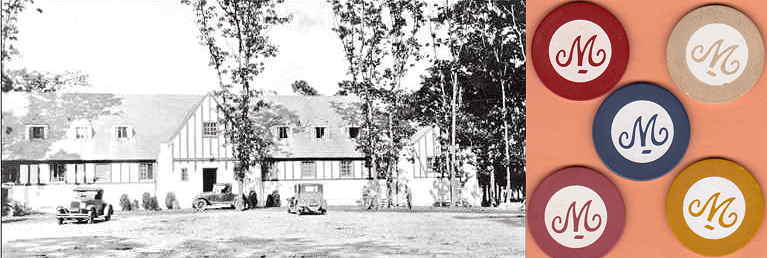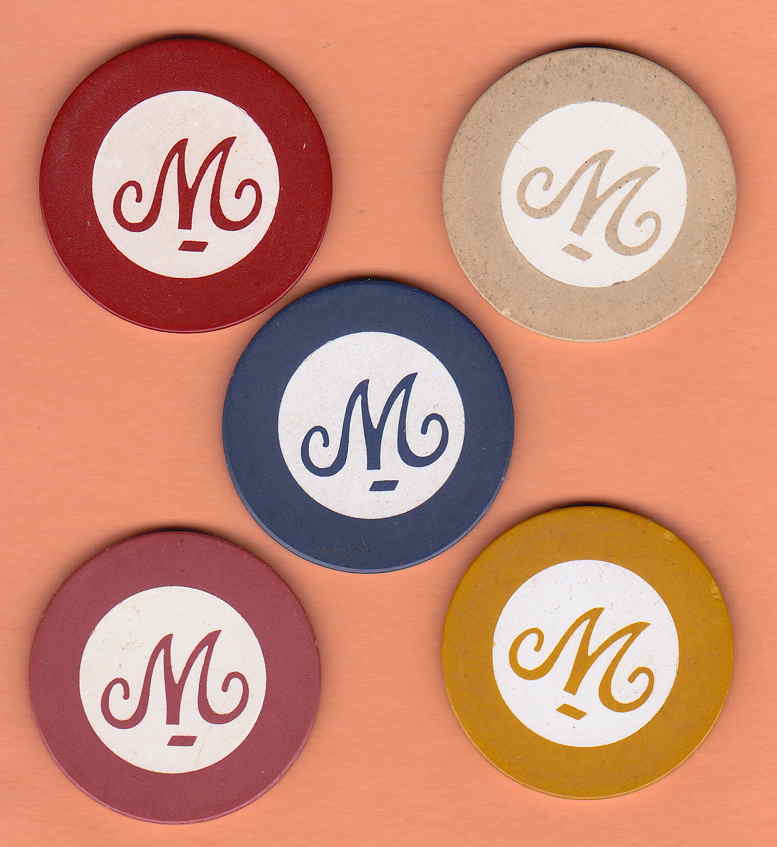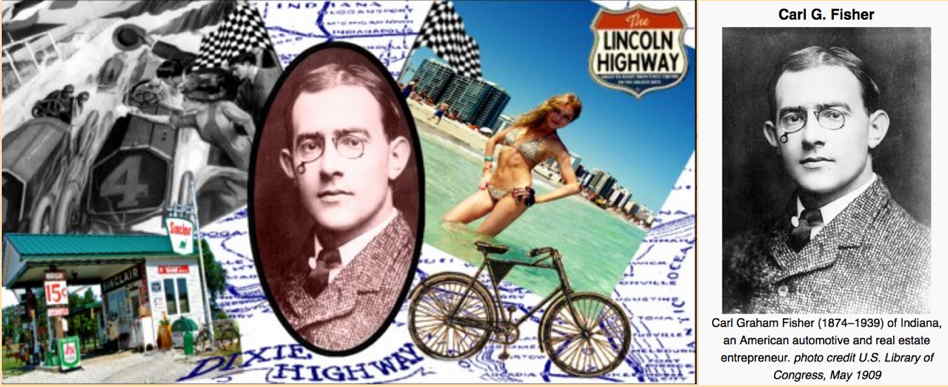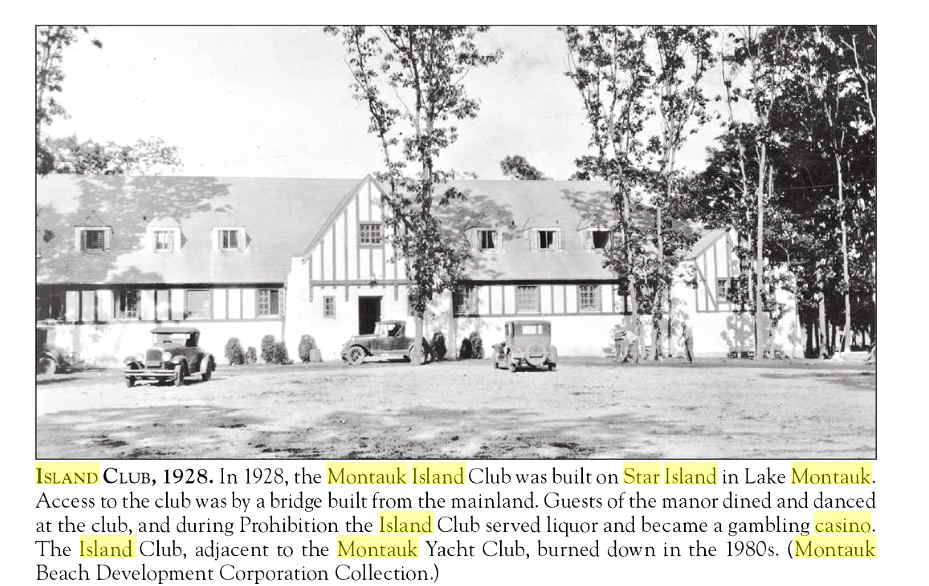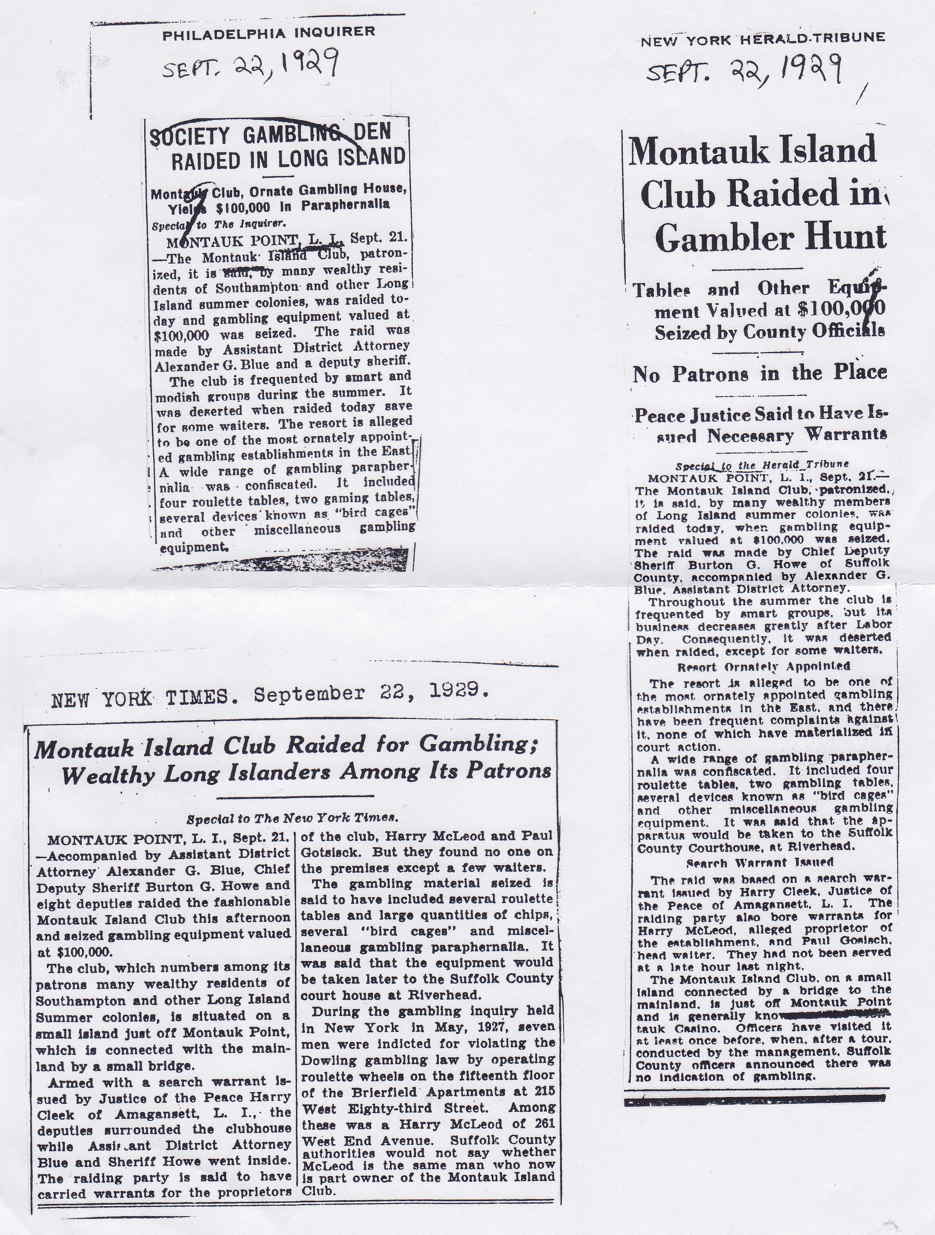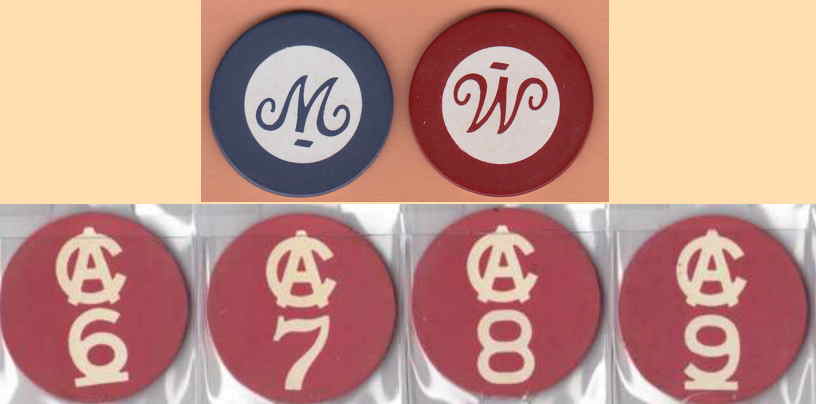Carl Graham Fisher was the remarkable American entrepreneur
who rose from childhood poverty and a life-long battle against severe
astigmatism to succeed at several businesses and run through several
fortunes to finally develop Montauk, Long Island, NY. �The history
of modern Montauk is intimately interwoven with the impressive figure
of one Carl Graham Fisher. In 1925, Fisher purchased the entire
peninsula of Montauk -- over 10,000 acres in total -- to develop as a
grand resort much of what makes up today's Montauk. Its roads,
churches, downtown village, harbor area, golf course, and dozens of
commercial buildings and homes were built by Fisher during a whirlwind
of development from 1926 - 32.� One
of his biggest projects was converting the lake, and small island
inside the lake, to a salt sea lake and port (re-naming it Montauk
Lake and Star Island, where his Casino was).
A gifted athlete, his interest in bicycle racing had led to his
interest in bike clubs, bike racing and selling bicycles, then to
automobiles and auto dealerships. This led to him acquiring an
interest in acetylene gas auto headlights, which he manufactured.
The headlights were eventually used on every auto in the
country. In 1917 he sold the business to Union Carbide,
leaving Fisher with $6 million dollars. His auto interest led him to
develop the Indianapolis Speedway, and �next, he organized and led the
drive to build the first modern highway linking the East and West Coasts
- the Lincoln Highway, and the North and South - the Dixie Highway.�
Next, �while vacationing in south Florida, he couldn't but help notice
the barrier island that paralleled the city of Miami. Miami Beach, as it
was called, was 3,500 acres of mangrove swamp and beach. Connected to
the mainland by a half finished wooden bridge, it was unpopulated, and
unwanted. Single handedly, Fisher transformed it into one of the most
stylish resorts in the world. He completed the bridge, cut down
the mangroves, filled in the swamp, laid out the roads, and built
magnificent hotels, homes and shops. It was a prodigious development,
and brought him to the height of his fame and fortune.� He was now worth
$50 million.
His next great challenge was Montauk. �Three times the size of
Miami Beach, almost entirely undeveloped, it was to be the culmination
of his life's work. He bought all 10,000 acres in 1925 for the
relatively modest sum of $2.5 million. He estimated it would take
another $7 million to build it. "Miami in the Winter, Montauk in the
Summer" was Fisher's slogan. He would provide the elite who had
flocked to his Miami Beach with a comparably exclusive summer resort
just hours from the social centers of New York and Newport.� He
"dreamed of a 'Miami of the North,' and to succeed he would need to
construct a first class destination that offered the litany of
activities the Astors, Vanderbilts, Goulds and others of that gilded
time wished to pursue.� Fisher's "Montauk Manor [which still
exists as a luxury resort today] was the most luxurious hotel on Long
Island" (source). It was the �Jazz Age� and the �Roaring
20s.�
�Fisher had planned for everything, everything that is except weather
and the Great Depression. On September 17, 1926, a tremendous hurricane
hit Miami Beach. � Then October 1929, the bottom fell out of the stock
market, and real estate values began a dizzying fall. Then, the Great
Depression in 1929. Since much of Fisher's wealth was based on real
estate, his fortune began to crumble. �. As his credit began to thin,
Fisher sold his holdings -- the Speedway, Miami Beach hotels, homes,
yachts, land nearly everything that could be liquidated. Stretched
beyond even his formidable means, his empire collapsed into bankruptcy
in 1932. Three years later, Fisher declared personal
bankruptcy.� He never completed his Montauk dream.
Read more about him here, here, here, here, and here .
Incidentally, the Carl Fisher discussed here has no connection to the
famous Fisher Auto Body company and large Fisher�s Island in Long Island
Sound close to Connecticut.
|

